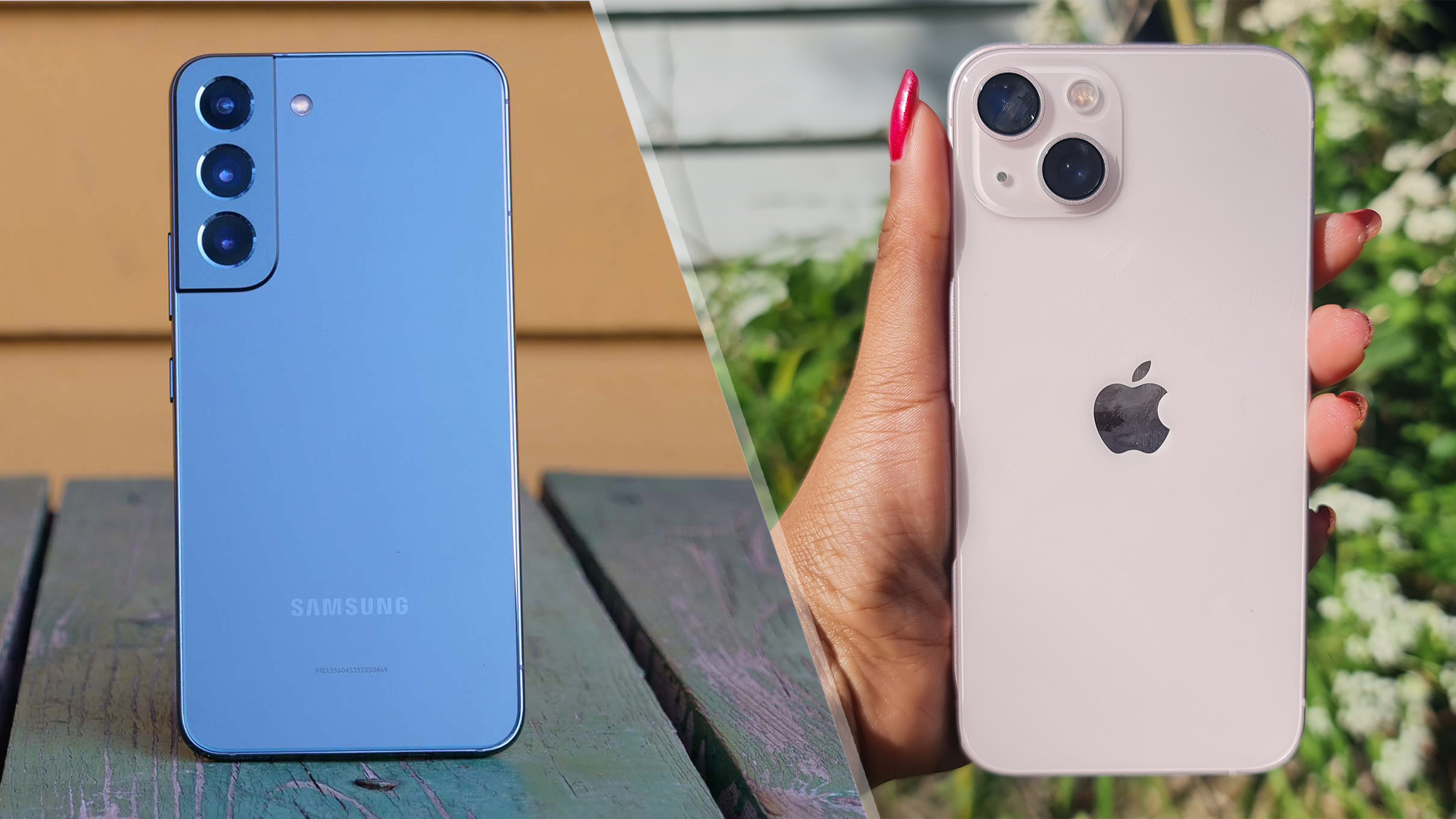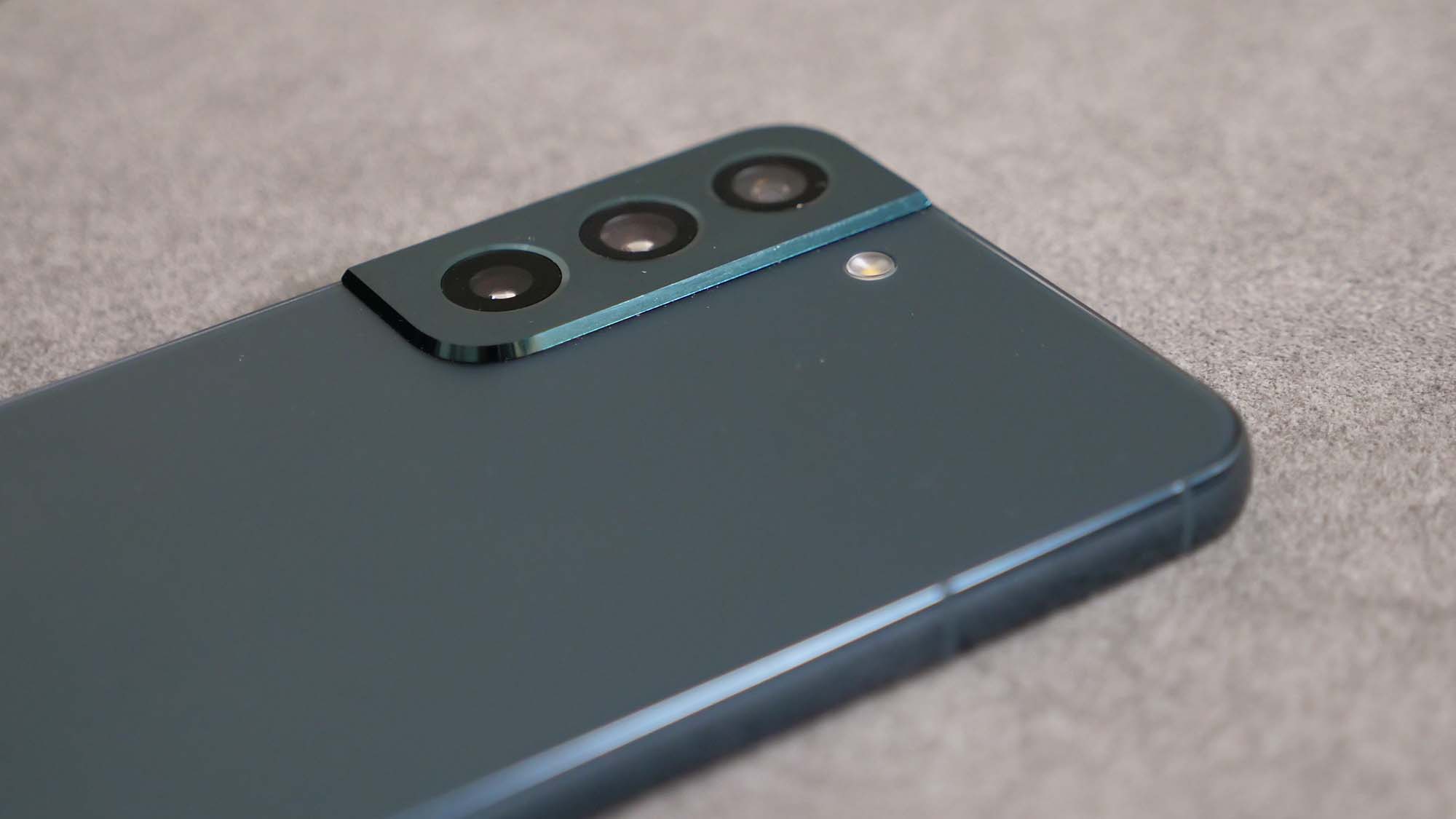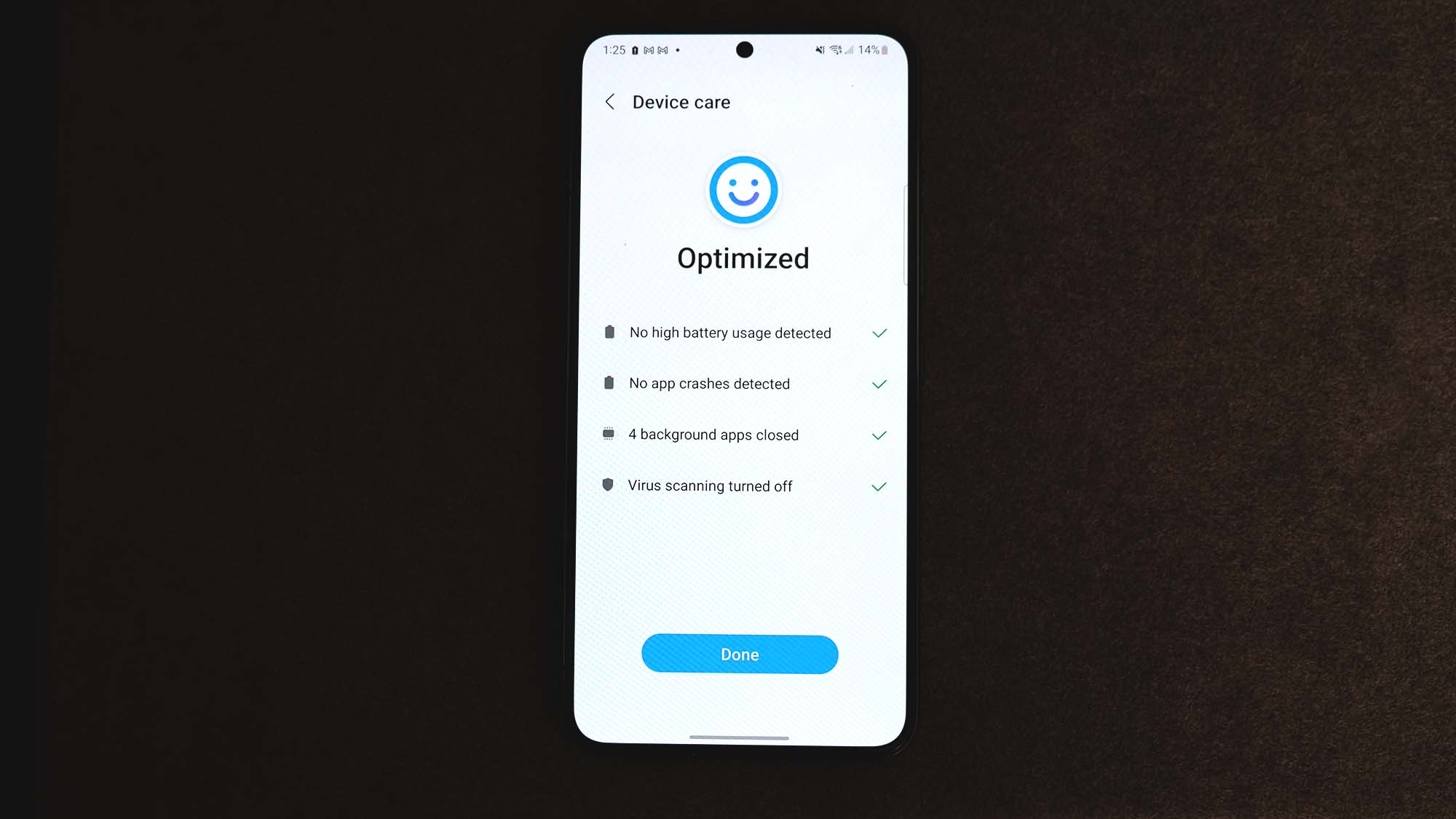Galaxy S22 vs. iPhone 13: Which phone is best?
Galaxy S22 and iPhone 13 are two of the best smartphones available today, but one has to come out on top!

The Galaxy S22 and the iPhone 13 have a lot in common as both phones seemingly had minor changes from their predecessors. But take a look under the hood, and you’ll discover that the upgrades make them more compelling and turn this into an intriguing face-off.
On Apple’s side, the iPhone 13 patched the biggest gap in the previous iPhone’s armor by dramatically improving battery life while continuing to enhance its processing power, which now comes with a robust neural engine. The Galaxy S22 got a much-needed boost to its primary camera and continues to flex one of the best mobile displays on the market. It also has a perfectly pocketable form factor.
While there are plenty of intriguing phones among the best smartphones on the market, it's Samsung vs. Apple for many flagship buyers, so let’s settle which is the best in 2022.
- Best smartphones in 2022
- Best budget phones in 2022
- Best mobile phone deals in March 2022
Galaxy S22 vs. iPhone 13: price and value
The iPhone 13 starts at $799 for a 128GB model with 4GB of RAM. You can upgrade to 256GB or 512GB of storage for $899 and $1,099, respectively. If you are a prolific mobile photographer or videographer, consider the storage upgrade; you should also think about the iPhone 13 Pro as it offers a massive camera upgrade over the standard model.
The Galaxy S22 also starts at $799 for the 128GB model with 8GB of RAM. For $50, you can double your storage to 256GB, which is an easy sell if you take a lot of photos and videos, or are a mobile gamer.
While neither of these phones will find itself among our best budget phones, the $799 starting price is still a marked improvement over the $999 and up you’ll pay for the top-tier flagships.
The iPhone 13 retains a slight edge in longevity with roughly six years of software support compared to five years of security updates for the Galaxy S22 with four years of major OS updates. However, the Galaxy S22 has a superior triple-camera array, a more modern 120Hz display, and for those that need more than the base, storage gets a slight price advantage. Overall, I deem this a draw; price or value alone shouldn’t sway your purchasing decision between these phones.
Sign up to receive The Snapshot, a free special dispatch from Laptop Mag, in your inbox.
Winner: Draw

Galaxy S22 vs. iPhone 13: design
As mentioned at the outset, both of these phones stick almost unflinchingly to the design of their predecessor. But that’s fine given the massive departure last year’s designs were for each phone. Given the unique and comfortable designs Samsung and Apple hit upon, it’s unreasonable to expect yearly reinvention.
The iPhone 13’s flat-edged look, despite being a throwback to the iPhone 4 aesthetic, still feels fresh in this modern reimagining. Other than adding a pink and blue color option, the only noticeable changes to the iPhone 13 are shaving the notch down by 20% and switching the rear camera lenses to a diagonal position (as opposed to a stacked layout). The latter doesn’t make any functional difference and the notch dips further down into the display now; Apple just narrowed it. I’m still a fan of the design, but there’s nothing much new to see here.
If you thought Apple didn’t change much, the Galaxy S22 next to the Galaxy S21 is an expert level, spot-the-difference game. The Contour Cut Camera housing is back, and while its design remains identical, this is the one spot where you could detect a change as it is now color-matched to the phone rather than using a contrasting trim color. The other change is only really perceptible in hand or if you put the phones back-to-back, and that is a slight size reduction for the Galaxy S22 as it moved to a 6.1-inch display down from 6.2 inches. This was a great move by Samsung. As I highlighted in my review, it brought it into a perfect pocketable size.

Each phone should hold up well over time with IP68 water and dust resistance, and comparable screen protection. Apple boasts about its proprietary Ceramic Shield on the iPhone, but the Gorilla Glass Victus on the Galaxy S22 is essentially identical. The magic glass that will survive a high or hard fall on concrete hasn’t been invented yet, but both should deal with small drops or scratches.
Looking at the phones by the numbers, they are virtually indistinguishable with the Galaxy S22 just a hair smaller at 5.75 x 2.8 x 0.3 inches compared to 5.78 x 2.82 x 0.3 inches for the iPhone 13. The Galaxy S22 carries that over to its weight, sneaking in at 5.9 ounces to a flat 6 ounces for the iPhone 13. Due to the Galaxy S22’s rounded edges, the difference between the two feels more significant than these numbers suggest.
The Galaxy S22 takes this category for me. While I like the aesthetics of both phones, the marginal size advantage of the Galaxy S22, combined with the much more subtle hole-punch front-facing camera versus the iPhone 13’s notch, is enough to give Samsung the nod.
Winner: Galaxy S22

Galaxy S22 vs. iPhone 13: display
The Galaxy S22 features a 6.1-inch, FHD+ ,2340 x 1080-pixel, Dynamic AMOLED 2X display with an adaptive 120Hz refresh rate. The iPhone 13 matches it in size with its 6.1-inch Super Retina XDR, 2532 x 1170-pixel, OLED display, but unlike its Pro siblings, it’s stuck at 60Hz.
The iPhone 13 has a sharper display with 457 pixels per inch (PPI) compared to 422 PPI for the Galaxy S22. However, I would challenge you to tell the difference without holding the phone within a couple of inches of your face; both look crisp and clear when displaying video, images, or text at a normal distance.

In every other regard, the Galaxy S22 display has the edge. Our lab testing showed it delivered more of the DCI-P3 color gamut at 79.3% vs. 78.1% — and that’s before you factor in Samsung’s Vivid mode, which can skyrocket that figure to 151.1%. It also delivered superior Delta-E color accuracy:0.24 compared to the iPhone 13’s 0.26 (lower is better). While the 795 nits of brightness the iPhone 13 produced is impressive, the Galaxy S22 delivered an almost comically high max brightness of 1,191 nits.
The 120Hz advantage for the Galaxy S22 is the icing on the cake. The iPhone still delivers the best 60Hz experience of any phone on the market, but there’s still a clear difference between its smoothed 60Hz animations and the Galaxy S22's actual high refresh rate that makes OS navigation slick and seamless.
The iPhone 13 has an excellent display, but this is an arena where Samsung will not be beaten.
Winner: Galaxy S22

Galaxy S22 vs. iPhone 13: performance
Down 2-0, the iPhone 13 couldn’t wait to see this category pop up. The A15 Bionic may as well be a time traveler as it’ll be a few years before Snapdragon could catch up with its performance. Don’t get me wrong. The Galaxy S22 and its Snapdragon 8 Gen 1 SoC will do everything you need it to, but this is a great college athlete versus an Olympian. Take that to mean an Olympic athlete or an actual Greek god; either feels accurate.
In real-world usage, both phones will churn through any number of apps, games, and multitasking you are going to throw at it. We loaded up dozens of Google Chrome tabs, apps, picture-in-picture videos and games with neither dropping a frame in our reviews. The Galaxy S22 does get the more challenging task of loading up some 120Hz games, but that didn’t slow it down either. Now moving to benchmarks and some more niche testing, you see the iPhone 13 flex its muscles a bit more.
On the Geekbench 5 overall performance test, the iPhone 13 delivered an impressive 4,436, only coming in behind its Pro siblings. The Galaxy S22 comes in roughly 1,100 points behind at 3,341. Don’t lose sight of the fact that the Galaxy S22 delivers outstanding real-world performance, but this shows you both how wildly overpowered the iPhone is and hints at the kind of longevity you can expect from the iPhone 13. It will be years before apps truly utilize all that power.

Our graphics-focused testing (Wild Life Unlimited) gave the Galaxy S22 its sole win, delivering 60 frames per second, which edges out the iPhone 13’s 56 fps. This was a particularly impressive leap for the Galaxy S22, nearly doubling the graphics score for the Galaxy S21 (35 fps).
The Adobe Premiere Rush video editing test is perhaps the best example of Apple’s performance advantage with a real-world use case; the iPhone 13 finished rendering and exporting a 4K video to 1080p in just 26 seconds. The Galaxy S22 finished in a respectable 48 seconds, but the iPhone remains in a class by itself.
If you are just using a phone for basic smartphone tasks, none of this is going to matter much to you. However, power users, or those that hang on to their phone for 5-6 years, the tremendous SoC advantage of the iPhone 13 will guarantee seamless performance for years to come.
Winner: iPhone 13

Galaxy S22 vs. iPhone 13: battery life and charging
From a strict hardware perspective, the Galaxy S22 should be the winner here as its 3,700 mAh battery is about 15% larger than the 3,227 mAh battery found in the iPhone 13. However, after apparently losing it in the cupboard last year, Apple found its secret sauce recipe for outstanding battery life again.
In our Laptop Mag battery test, which has the phone continuously surf the web over a cellular connection at 150 nits of brightness, the iPhone 13 cruised across the information superhighway for 10 hours and 33 minutes. The Galaxy S22, on the other hand, was sputtering on the side of the road after 8 hours and 15 minutes. You can’t dismiss a 2 hour and 18-minute advantage on this test, if you are someone that commonly has trouble making it through a day, or just is forgetful about charging your phone, the iPhone 13 is the safer bet.

Moving on to charging, neither covers itself in glory as the Galaxy S22 at 25W is the lone model in the S22 lineup not to get faster 45W charging this year, and the iPhone 13 remains at Apple’s paltry 20W. Thanks to its smaller battery, the iPhone 13 doesn’t charge that much slower, reaching 51% in 30 minutes in our testing compared to 57% for the Galaxy S22. However, with phones like the Xiaomi 12 Pro charging to 100% in under 23 minutes, it’s hard to get too excited about either of these.
Both phones also support wireless charging with Qi compatibility and the iPhone 13 sports Apple’s proprietary MagSafe charging. MagSafe is finally seeing some wider adoption with some interesting new products from third-party manufacturers, so I give it a slight edge on the wireless charging front.
Charging is close to a wash, but on the strength of its decisive battery life victory, the iPhone 13 takes home this category.
Winner: iPhone 13

Galaxy S22 vs. iPhone 13: cameras
Under the more is better theory, Samsung takes this one home with three rear cameras on the Galaxy S22 to two on the iPhone 13, but there’s more to it than that.
The iPhone 13 made fewer changes to its camera array; it still features a mind-blowing f/1.6 primary lens at 12MP and a less impressive f/2.4 ultra-wide at 12MP. This year, the big leap for the iPhone 13 camera is larger pixels, going from 1.4 µm up to 1.7 µm. Why does that matter? It allows the camera to gather far more light. Combined with its f/1.6 primary lens, there is nothing that can compete with the iPhone 13 primary lens in low-light conditions.
The Galaxy S22 made far more changes to its camera array. The primary wide-angle is now a 50MP sensor at f/1.8 that uses “tetra binning” to do in software what Apple has done in hardware with its larger pixel sensor. The ultra-wide is still 12MP at a slightly better f/2.2 compared to the iPhone 13 . The telephoto takes a resolution hit at 10MP at f/2.4 (last year it was 64MP at f/2.0), but it now sports an optical 3x zoom rather than hybrid zoom, so the net result is sharper.

The results from the primary wide-angle cameras on both phones are excellent in daylight. Samsung has toned down its once extremely aggressive HDR saturation, and I feel like now it’s just delivering a pleasantly hyperreal look. I don’t love Apple’s standard color profile with its camera, but thankfully now we have Photographic Styles, and after taking the time to set up my preferred style once, it’s ready to go.

iPhone 13 wide-angle

Galaxy S22 wide-angle
Low-light with the primary lenses is a different matter. This year, Samsung took a significant leap of its own with its sensor upgrade, but the iPhone has a clear edge thanks to its aperture and sensor size combination. That’s if you are leaving off night mode and trying to take a traditional shot in low-light. However, particularly for shots of people or anything where there can be movement, the non-night mode low-light performance is critical as it requires far less time for shaky hands or a moving subject to blur the shot.

The ultra-wide cameras on both phones are a distant second to the primary lenses, so you will want to stick with the wide-angle whenever possible, but if you are capturing a cityscape or a big group of friends, that ultra-wide option can come in handy. Both are color matched effectively with the primary sensor, but particularly in low-light, you will feel the drop in quality as detail in the marginally lit areas of the image will start to disappear entirely.

iPhone 13 ultra-wide

Galaxy S22 ultra-wide
Compared to the iPhone's digital zoom, Samsung gets the easy win when it comes to photo reach with its 3x telephoto. Anything beyond 4-5x on the iPhone 13 is going to become unusable, while the Galaxy S22 holds up well to about 10x zoom. I’m an advocate for telephoto zoom on phones as whether it's my kids, animals, or just some distant architecture, it allows me to capture shots that I’d otherwise have missed.

Galaxy S22 wide-angle

Galaxy S22 10x zoom
The iPhone is still the portrait photo champ for selfie fans. The TrueDepth camera gives it more data than the basic front-facing camera on the Galaxy S22 — and it shows with a much sharper edge to the bokeh than Samsung’s attempt. Apple also offers its array of portrait lighting options that can create some interesting effects if you need a quick headshot.

iPhone 13 - front-facing

Galaxy S22 front-facing camera
Apple remains the easy winner for mobile video due to its sensor-shift image stabilization, Dolby Vision HDR recording and the new Cinematic mode. If you are a mobile content creator that works with video, it’s impossible to argue with the iPhone as the frontrunner. The Galaxy S22 puts up a good fight and even has the resolution edge with 8K video at 24fps at the top end. But when it comes to the 4K or 1080p video that most people use, the iPhone will deliver superior results.
Overall, I’m calling this one for the iPhone 13. While I love the extra telephoto lens on the Galaxy S22, the iPhone 13’s strong low-light performance, excellent video quality and standout portrait mode makes it the better mobile camera for most people.
Winner: iPhone 13

Galaxy S22 vs. iPhone 13: software
This isn’t iOS vs. Android. Both have advantages and disadvantages, but both are mature operating systems and share many features. Read our recent Android vs. iPhone article if you are interested in a general look at the two sides; we asked three phone experts for their opinions on the matter.
Back to the point at hand. Leaving aside some proprietary features like iMessage, or now to a more limited degree FaceTime, the biggest factor here is software support. This is an area where Android has taken significant strides over the last year.
Samsung now holds the crown when it comes to Android updates with four years of major OS updates and four years of security updates. Only Google outlasts it with five years of security updates, but the Pixel taps out after three years of major OS updates. The iPhone remains the gold standard here with roughly six years of software and security updates; Apple doesn’t have an official policy on it, so we can only go off past history.
However, this is getting close to rendering the discussion of software support meaningless as many users are likely to upgrade phones before hitting the four- or six-year mark.
With that said, I still have to give the edge to the iPhone 13; not only will it have longer software support, but thanks to that overpowered processor, it should be able to better handle that software in the distant future of 2027.
Winner: iPhone 13

Overall winner: iPhone 13
After a rocky start, the iPhone 13 stormed back and took this one. While a couple of categories like performance and battery life are decisive victories for the iPhone, for the most part, this was a battle of inches.
The Galaxy S22 is still one of the best phones available today with a stellar 120Hz display, a beautiful design, an excellent triple camera array and lengthy software support. Though it ultimately lost in some other categories, the battery life is the only one that I think could present a real problem for some users.
The iPhone 13, on the other hand, offers a brilliant new primary camera, long-lasting battery life, the Bionic A15 SoC that may as well be the work of Tony Stark and software support that will likely outlast your ownership of the phone.
Sean Riley has been covering tech professionally for over a decade now. Most of that time was as a freelancer covering varied topics including phones, wearables, tablets, smart home devices, laptops, AR, VR, mobile payments, fintech, and more. Sean is the resident mobile expert at Laptop Mag, specializing in phones and wearables, you'll find plenty of news, reviews, how-to, and opinion pieces on these subjects from him here. But Laptop Mag has also proven a perfect fit for that broad range of interests with reviews and news on the latest laptops, VR games, and computer accessories along with coverage on everything from NFTs to cybersecurity and more.

